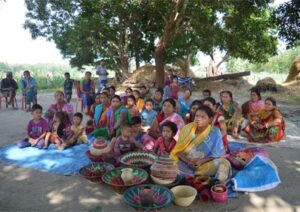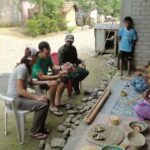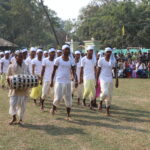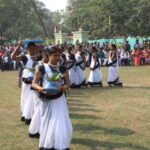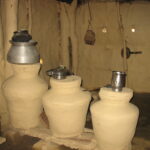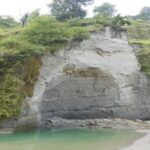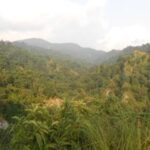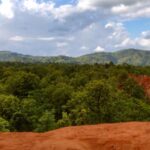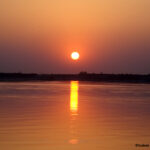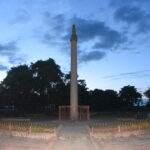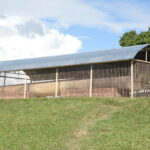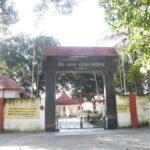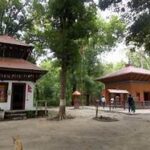Values Of VTR
Cultural Values
Cultural values have formed one of the inseparable values for the people of the VTR areas. People of the area take pride of the inhabitants of the VTR and the nature has been a boon for the people to live happily. The abode of the Goddess Durga (Nar Devi & Mai asthan, Sahodra Temple) and almighty Shiva (Jatashankar Temple & Sofa Temple) are truly the guardian deity of the area. The annual religious congregations at these places have made the region very special for the devotees to realize the importance of cultural values.
Human Ecological Values
Three major backward classes, as Tharus, Oraons & Dhamads with other local groups, which inhabit within and on the periphery of the reserve, showing inseparable eco-cultural associations with the forest of Valmiki Tiger Reserve. They are basically farmers growing crops on the lands surrounded by and situated on the fringe of the Reserve. However, through the ages, they have been meeting their demand for fuel wood, fodder and small wood on the forests of VTR. But about four years back, through the initiatives of the Forest Department and implementation of eco-development activities, that the local youths have been imparted training for self-employment and also trained in eco-tourism activities as tourist guides, tourist assistant, safari vehicle drivers and also being part of cultural program performing groups.
The Valmiki landscape harbors vivid socio – cultural diversity. Tharu community is the dominant ethnic group. There are several theories on colonization of this community in the Himalayan terai. It is said that the community migrated from Rajasthan to the Himalayan foothills some 400 years ago. The Tharu society is extremely Eco Friendly, all exercises of this tribe are profoundly related with nature. Their living arrangement, sustenance, fabrics, craftsmanship, religion, economy and numerous other pieces of life are based on nature and keep environmental balance. Their prime occupation is agriculture and staple food is rice. They are non-vegetarian and like chicken, pork, snails and fish. Tharus speak Bhojpuri and worship Hindu deities. Ramnavmi is their main festival. They also maintain socio-cultural relationship with the Tharus of Nepal.
Besides Tharus, other tribes, locally called as ‘Dhangar’ – comprised of Oraon, Munda, Lohra and Bhuiya, also form a significant part of the population around the Reserve. The ‘Dhangars’ are native of Chhotanagpur Hills, and were brought to the area as laborers by the British. Each Dhangar tribe has its own dialect and they observe their traditional festivals. Currently their population is around 0.5 lakh. Communities other than the tribes are called ‘Bajiyan’. They are outsiders and involved in agriculture as well as small business in the villages.
Aesthetic Values
Because of its scenic splendor, the VTR is a popular destination for the tourists and nature lovers in this area. The high altitude mountain series, covered with sal and its associates, give the nature lovers a unique feast with all its beauty and charm. The panoramic scenery of the undulating mountain interspersed with fast-flowing streams and green meadows along with salubrious environment attract the peace seekers and nature enthusiasts from all over the Country & even World.
VTR has now earned laurels as one of the best eco- tourism destination for wildlife and soft adventure activities in the region. River Gandak, flowing along the north-western border of the Reserve, further adds to its riverine scenic beauty and also provides opportunity for sailing and rafting. Apart from these, there are several places of historical, archeological and mythological importance around the Reserve. Trail from Gobardhana Eco-huts to Parevadah (place where there are numerous nests of birds), going criss-cross the Singaha river through deep gorges gives a scintillating feeling and thrill. The plains of Pandai river and the pebbles carpeting its bed, with green forests and mountains nearby, makes one feel being amongst nature.
Pilgrimage
Visit to Someshwar temple situated over the top of the hill and Valmiki Ashram situated across the Tamas river in Nepal are the most important pilgrimage sites through VTR. The Someshwar hill is located in the southern part of VTR, on the top of which is built the Someshwar Fort and the Temple at an elevation of 2884 feet, making it also the highest point in the State of Bihar. It is surrounded by the low altitude evergreen forest. People throng the temple for worship during navratra. However, visitors come to Valmiki Ashram throughout the year. Around 50,000 pilgrims from various parts of the State and Uttar Pradesh, and Nepal visit the two temples in during the season. People also visit the other local deity, as Madanpur Devi Asthan, Nar Devi & Jata Shankar Temple at Valmikinagar, Sahodara Devi Asthan & Sofa Temple at Manguraha. Innumerable numbers of local devotees throng to offer their traditional rituals and prayers at these places.
Archaeological Values
Besides giving way to Valmiki Ashram in Nepal, there are many historical sites nearby, as two pillars from Ashoka period kept in Rampurwa village. The Ashoka Pillar at Lauriya is 2000 years old, 35 feet high pillar made of polished sandstone. Close to the pillar, lies Nandan Garh, an 80 feet high mound made of bricks. It is believed that the mound is an Ashoka Stupa in which the ashes from Lord Buddha’s funeral pyre were enshrined. Chanki Garh is another Stupa of the Pandvas period.

